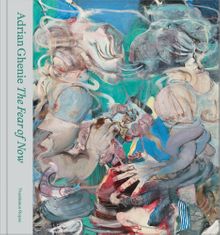ARTIST MONOGRAPHS
|
|
STATUS: Out of stock Temporarily out of stock pending additional inventory. |
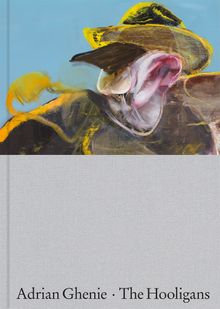 Adrian Ghenie: The Hooligans
Adrian Ghenie: The Hooligans
Published by Pace Publishing.
Text by Apsara DiQuinzio, Masha Tupitsyn.
This book documents a selection of works by artist Adrian Ghenie (born 1977) included in his exhibition The Hooligans. The artist's newest body of work, these nine paintings and three drawings continue Ghenie’s exploration of abstracting figures, layering shapes and gestural painting techniques to create complex images intertwined with art historical narratives. Influenced by Impressionist painters, as well as Turner, Van Gogh and Gauguin, Ghenie’s meditation on the idea of “hooliganism” examines the role of rebellion in an artist’s process, working to reject or ignore traditionalism to create the new. An art historical text by Apsara DiQuinzio traces the trajectory of Ghenie's practice through to today. In her new text, Masha Tupitsyn discusses the concept of the double, looking at its history in philosophy, literature, film and art.
PUBLISHER
Pace Publishing
BOOK FORMAT
Hardcover, 8.5 x 12 in. / 80 pgs / 25 color / 3 bw.
PUBLISHING STATUS
Pub Date 1/4/2022
Active
DISTRIBUTION
D.A.P. Exclusive
Catalog: SPRING 2022 p. 120
PRODUCT DETAILS
ISBN 9781948701426 TRADE
List Price: $40.00 CAD $54.00 GBP £32.00
AVAILABILITY
Out of stock
STATUS: Out of stock Temporarily out of stock pending additional inventory. |
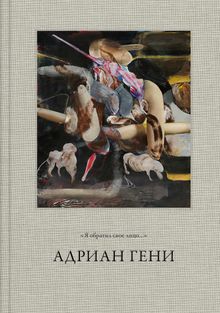 Adrian Ghenie: I Have Turned My Only Face...
Adrian Ghenie: I Have Turned My Only Face...
Published by The State Hermitage Museum/Galerie Thaddaeus Ropac.
Edited by Oona Doyle. Introduction by Mikhail Piotrovsky. Text by Dimitri Ozerkov, et al.
Romanian artist Adrian Ghenie’s (born 1972) latest paintings reference 17th- and 18th-century Dutch paintings from St Petersburg’s Hermitage Museum. This book accompanies his exhibition at the Hermitage.
PUBLISHER
The State Hermitage Museum/Galerie Thaddaeus Ropac
BOOK FORMAT
Hardcover, 9 x 11 in. / 88 pgs / 20 color / 1 bw.
PUBLISHING STATUS
Pub Date 12/22/2020
Active
DISTRIBUTION
D.A.P. Exclusive
Catalog: FALL 2020 p. 181
PRODUCT DETAILS
ISBN 9782910055875 FLAT40
List Price: $32.00 CAD $44.95
AVAILABILITY
Out of stock
STATUS: Out of stock Temporarily out of stock pending additional inventory. |
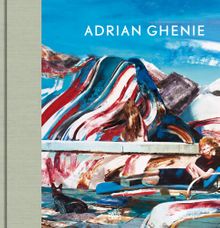 Adrian Ghenie: Paintings 2014-2019
Adrian Ghenie: Paintings 2014-2019
Published by Hatje Cantz.
Edited by Juerg Judin.
Particularly since his spectacular exhibition in the Romanian Pavilion at the 56th Venice Biennale in 2015, Adrian Ghenie (born 1977) has been celebrated as one of the most interesting and unconventional painters of his generation. His works—painted in oils sometimes applied with a palette knife or thrown onto the canvas—have already gained entry into the collections of the Metropolitan Museum of Art, Tate Modern and the Centre Pompidou, and have achieved one auction record after another in the art market. Yet neither Ghenie’s subjects nor his technique cater to public taste. The history of the “century of humiliation” (as Ghenie refers to the 20th century), and its perpetrators and victims, are the predominant sources for his collage-like compositions. These subjects are juxtaposed with heroes such as Van Gogh and Darwin, as well as depictions of himself.
PUBLISHER
Hatje Cantz
BOOK FORMAT
Clth, 11 x 11.5 in. / 176 pgs / 82 color.
PUBLISHING STATUS
Pub Date 5/19/2020
Active
DISTRIBUTION
D.A.P. Exclusive
Catalog: SPRING 2018 p. 122
PRODUCT DETAILS
ISBN 9783775743525 TRADE
List Price: $85.00 CAD $112.50
AVAILABILITY
In stock
in stock $85.00 Free Shipping UPS GROUND IN THE CONTINENTAL U.S. |
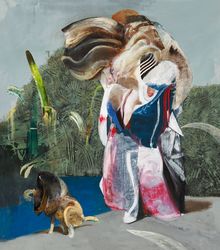 Adrian Ghenie: The Battle between Carnival and Feast
Adrian Ghenie: The Battle between Carnival and Feast
Published by Galerie Thaddaeus Ropac/Marsilio Editori.
Edited by Silvia Davoli, Oona Doyle. Text by Luca Massimo Barbero.
Adrian Ghenie (born 1977) experiments with color in ten paintings inspired by Dutch painter Pieter Bruegel the Elder’s Battle between Carnival and Lent, produced specifically for an exhibition at the Palazzo Cini in Venice. Here, Ghenie’s expressive paintings are presented alongside an essay by art historian Luca Massimo Barbero.
PUBLISHER
Galerie Thaddaeus Ropac/Marsilio Editori
BOOK FORMAT
Hardcover, 9 x 11 in. / 48 pgs / 15 color / 1 bw.
PUBLISHING STATUS
Pub Date 11/17/2020
Active
DISTRIBUTION
D.A.P. Exclusive
Catalog: FALL 2019 p. 197
PRODUCT DETAILS
ISBN 9782910055950 TRADE
List Price: $35.00 CAD $39.95
AVAILABILITY
In stock
in stock $35.00 Free Shipping UPS GROUND IN THE CONTINENTAL U.S. |
 Adrian Ghenie: Jungles in Paris
Adrian Ghenie: Jungles in Paris
Published by Galerie Thaddaeus Ropac.
Edited by Oona Doyle. Poetry by Ghérasim Luca.
Jungles in Paris features paintings, collages and charcoal drawings by Romanian painter Adrian Ghenie (born 1977). The title is drawn from Henri Rousseau's exhibition at Tate Modern in 2005–6. The tension created by the juxtaposition of urban Paris and the exotic, wild, untethered jungle is the foundation for Ghenie's body of work. The catalog opens with a poem by the Romanian surrealist Ghérasim Luca.
PUBLISHER
Galerie Thaddaeus Ropac
BOOK FORMAT
Hardcover, 9.25 x 11.25 in. / 56 pgs / 23 color.
PUBLISHING STATUS
Pub Date 11/17/2020
Active
DISTRIBUTION
D.A.P. Exclusive
Catalog: FALL 2019 p. 197
PRODUCT DETAILS
ISBN 9782910055882 TRADE
List Price: $35.00 CAD $39.95
AVAILABILITY
In stock
in stock $35.00 Free Shipping UPS GROUND IN THE CONTINENTAL U.S. |
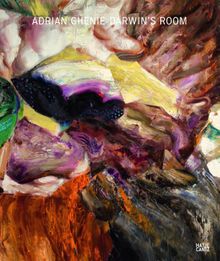 Adrian Ghenie: Darwin's Room
Adrian Ghenie: Darwin's Room
Published by Hatje Cantz.
PUBLISHER
Hatje Cantz
BOOK FORMAT
Paperback, 9.5 x 11.25 in. / 96 pgs / 60 color.
PUBLISHING STATUS
Pub Date 10/27/2015
Active
DISTRIBUTION
D.A.P. Exclusive
Catalog: FALL 2015 p. 177
PRODUCT DETAILS
ISBN 9783775740135 FLAT40
List Price: $55.00 CAD $72.50
AVAILABILITY
Out of stock
STATUS: Out of stock Temporarily out of stock pending additional inventory. |
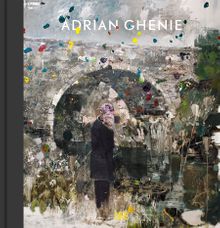 Adrian Ghenie
Adrian Ghenie
Published by Hatje Cantz.
Edited by Juerg Judin.
PUBLISHER
Hatje Cantz
BOOK FORMAT
Clth, 11 x 11 in. / 184 pgs / 100 color.
PUBLISHING STATUS
Pub Date 6/30/2014
Out of print
DISTRIBUTION
D.A.P. Exclusive
Catalog: FALL 2013 p. 142
PRODUCT DETAILS
ISBN 9783775736749 TRADE
List Price: $85.00 CAD $100.00
AVAILABILITY
Not available
STATUS: Out of print | 00/00/00 For assistance locating a copy, please see our list of recommended out of print specialists |
 Adrian Ghenie
Adrian Ghenie
Published by Hatje Cantz.
Text by Anette Hüsch, Jürg Judin.
PUBLISHER
Hatje Cantz
BOOK FORMAT
Clth, 11.5 x 11.25 in. / 120 pgs / 80 color.
PUBLISHING STATUS
Pub Date 11/30/2009
Out of print
DISTRIBUTION
D.A.P. Exclusive
Catalog: FALL 2009 p. 135
PRODUCT DETAILS
ISBN 9783775724630 TRADE
List Price: $55.00 CAD $65.00
AVAILABILITY
Not available
STATUS: Out of print | 00/00/00 For assistance locating a copy, please see our list of recommended out of print specialists |
